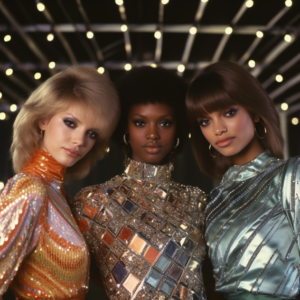The allure of ancient Egyptian civilization extends far beyond its monumental pyramids and majestic pharaohs. One of the most captivating aspects of this culture is the profound significance attached to beauty and cosmetics. In this exploration, we delve into the enchanting world of ancient Egyptian beauty rituals, uncovering the secrets behind their iconic makeup practices.
Introduction
In the realm of ancient Egypt, beauty was not merely a superficial pursuit but an integral part of daily life and religious practice. Both men and women, from commoners to royalty, adorned themselves with makeup, believing it to hold magical and spiritual properties. The distinctive makeup styles of ancient Egypt not only enhanced physical beauty but also played a crucial role in cultural and religious ceremonies.
Ingredients and Symbolism
The makeup used by ancient Egyptians was crafted from a diverse array of natural ingredients. Kohl, a black powder derived from galena, a lead-based ore, was a staple in their cosmetic arsenal. This substance was applied around the eyes in a distinctive almond shape, not only for its aesthetic appeal but also to protect against the harsh desert sun and ward off evil spirits.
Other common ingredients included ochre, which provided a reddish pigment for lips and cheeks, and malachite, a green mineral used for eye makeup. These natural elements not only added vibrant colors to the face but also symbolized aspects of nature and the divine, connecting the wearer to the cosmic forces revered in ancient Egyptian spirituality.
The Religious Significance of Makeup
In ancient Egypt, the application of makeup went beyond the physical realm; it held profound religious and spiritual implications. Eye makeup, particularly the distinctive kohl-lined eyes, was believed to invoke the protection of the goddess Ra, warding off illnesses and malevolent forces. The exaggerated almond shape of the eyes mirrored the wings of the falcon, a sacred bird associated with solar deities.
Makeup wasn’t merely a cosmetic enhancement but a transformative ritual. The process of applying makeup symbolized a connection with the divine, a way for individuals to align themselves with the gods and goddesses who oversaw matters of beauty, fertility, and protection.
Social Status and Identity
While makeup had religious significance, it also played a crucial role in social life. The extent and style of makeup often indicated an individual’s social status. Wealthier Egyptians could afford a more extensive range of cosmetics, showcasing their affluence and societal standing.
The intricate designs and patterns applied to the face weren’t only a display of beauty but also a form of self-expression and identity. Individuals would personalize their makeup styles, and specific motifs or colors might signify allegiance to a particular deity or express personal beliefs.
Innovation in Cosmetics
The craftsmanship and innovation in Egyptian cosmetics extended to the tools used for application. Elaborate cosmetic containers, often made of precious materials like alabaster or gold, were both functional and ornamental. The intricate designs and engravings on these containers reflected the Egyptians’ reverence for aesthetics, even in the most mundane aspects of daily life.
Legacy in Modern Beauty
The ancient Egyptian beauty rituals continue to influence modern makeup trends. The iconic cat-eye makeup, inspired by the kohl-lined eyes of ancient Egyptian art, remains a timeless and widely adopted style. The use of natural ingredients in cosmetics has also seen a resurgence, with contemporary brands incorporating elements like charcoal and botanical extracts for their symbolic and skin-friendly properties.
Conclusion
The beauty rituals of ancient Egypt offer a mesmerizing journey into a culture that revered not only the aesthetic aspects of makeup but also its profound symbolism and spiritual connotations. The legacy of Egyptian beauty practices endures, reminding us that the pursuit of beauty is not a superficial endeavor but a timeless expression of human creativity, spirituality, and identity. In our exploration of historical beauty, we will continue to unravel the diverse threads that weave the rich tapestry of cosmetic traditions across civilizations.



